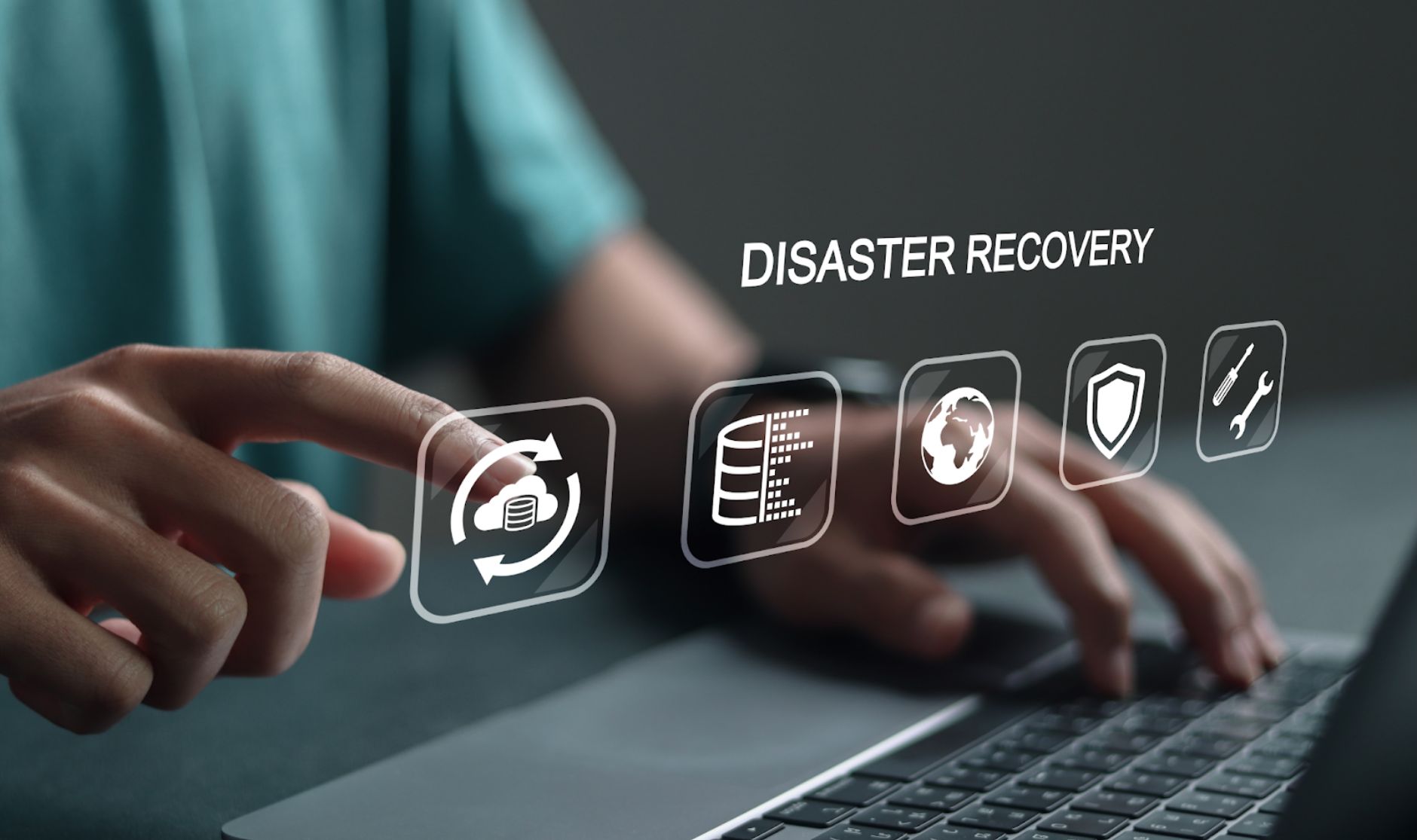Disaster Recovery Planning for Small Businesses: A Practical Guide
07 May 2025
6 Mins Read

- What Is Disaster Recovery?
- Disaster Recovery Plan For Small Businesses: The Reasons
- How to Build a Disaster Recovery Plan
- Step 1: Identify the Most Likely Risks
- Step 2: Back Up Important Data
- Step 3: Take Inventory of Critical Assets
- Step 4: Create a Communication Plan
- Step 5: Define Roles and Responsibilities
- Step 6: Write a Step-by-Step Recovery Plan
- Step 7: Test the Plan
- Step 8: Review and Update Regularly
- Conclusion
When unexpected events hit a company, the loss can be colossal. Cyber-attacks, machinery failures, or even natural disasters can strike business operations out of the blue.
For small companies, even a minute of downtime can result in lost revenues, lost reputation, or permanent damage.
It is with this at heart that there is a need for disaster planning. A disaster recovery plan gives companies a guide to use when they fall short so that they can bring them back to operation sooner.
It will be daunting in the beginning to come up with this plan, particularly for small firms with insufficient resources.
With the right disaster recovery plan for small businesses, however, small firms are able to put together a reasonable and effective disaster recovery plan.
This paper provides an outline of what needs to be done and how to split up the process of disaster recovery into manageable steps.
What Is Disaster Recovery?
Disaster recovery (DR) is restoring systems, data, and business-critical processes after a disrupting event. The goal is to minimize losses and reduce downtime.
Big companies can spare whole departments for disaster recovery, but small companies need a more streamlined process that addresses all of the areas that are most critical.
Disaster recovery is not a matter of technical solutions. There are intra-firm communications, recovering back files, and who’s doing what.
The better prepared the firm is, the faster the firm returns to a level of normal operation.
Disaster Recovery Plan For Small Businesses: The Reasons
Small businesses are often more vulnerable during disasters. Many don’t have large cash reserves or extra staff to handle emergencies. A clear plan can help them stay in control during a crisis.
Here are a few common scenarios that make disaster recovery planning important:
- Power outages: An instantaneous blackout can paralyze sales or disrupt communication.
- Cyberattacks: Hackers often target small businesses due to weaker security.
- Floods or fires: Physical destruction can ruin essential records and equipment.
- Software failures: Server crash or file corruption can destroy valuable data.
You must always plan! That can allow the small businesses to bounce back quickly instead of struggling to catch up.
How to Build a Disaster Recovery Plan
Creating a disaster recovery plan can be complicated, but dividing it into steps makes it easier.
The following steps provide a real-world approach for small businesses to prepare for and recover from unexpected occurrences.
Each step addresses an essential aspect of the recovery process to keep businesses organized and prepared.
Step 1: Identify the Most Likely Risks
Not all disasters are equally likely to happen. Begin by listing the potential risks most relevant to the business. For example, a coastal business may face hurricanes, while a company in a dry region may worry more about wildfires.
Other risks to consider:
- Hardware failure
- Ransomware attacks
- Human errors
- Supply chain interruptions
After listing them, rank each one based on its likelihood and potential damage. This helps in focusing time and effort on the biggest threat.
Step 2: Back Up Important Data
Data loss is one of the biggest risks for any business. That’s why regular data backups are essential. Use at least one off-site or cloud-based storage solution to make sure files are safe even if the office is damaged.
Backup tips:
- Schedule automatic backups daily or weekly.
- Test backups regularly to ensure they work.
- Store a copy of backups offline or in a different location.
Do not forget to archive customer data, financial reports, employee data, and project documents.
These would do more harm to the business than losing the hardware. As an added safety and convenience feature, consider purchasing a data backup and recovery tool from a secure vendor.
They usually offer data backup and recovery service assistance if anything goes amiss with the data.
Step 3: Take Inventory of Critical Assets
Knowing what to protect is as important as knowing what to protect against. Make a list of all important assets. This includes:
- Computers and servers
- Customer databases
- Financial records
- Communication systems
- Machinery or tools
Also, include information such as where each asset is located and what is needed to repair or replace it. This step provides a clear picture of what needs to be restored first during a disaster.
Step 4: Create a Communication Plan
During a crisis, there should be clear communication. The employees should be instructed on what they can do and customers informed about delays or alterations in services.
- Include the following in the plan:
- Emergency contact information for all staff
- Pre-written messages for customers or suppliers
- A method to notify employees quickly (e.g., group text, messaging apps)
Keep this plan updated. Contact lists change often, so make sure the latest version is easy to access and available in more than one place.
Step 5: Define Roles and Responsibilities
Who does what during an actual disaster? Everyone on the disaster recovery team should know their part. Assign specific duties, such as:
First question: Who will contact customers?
Second question: Who will handle system recovery?
Third Question: Who will report the issue to emergency services or insurance?
Having roles defined ahead of time removes confusion. It also makes response efforts faster and more organized.
For extremely small companies with few employees, one individual can perform a couple of tasks. That is okay, as long as the steps can be understood and carried out.
Step 6: Write a Step-by-Step Recovery Plan
A good recovery plan has clear-cut procedures for different disasters. This simplifies the process of knowing what to do in case of a given scenario for the internal team members.
Break it down by scenario:
- For a power outage: Where are the backup batteries or generators? How will work continue during the outage?
- For a cyberattack: Who will shut down access? How will critical systems be cleaned and restored?
- For a flood: What equipment needs to be moved or protected? How is damage assessed?
Make the instructions simple and clear. Bullet points work well. Include estimated timelines for getting back to normal operations.
Step 7: Test the Plan
A plan that hasn’t been tested might fail when needed most. Run regular drills to check how well the disaster management team can follow the recovery steps. This can be done once or twice a year, depending on the business.
Benefits of regular testing include:
- Finding weak spots in the plan
- Giving staff hands-on experience
- Building confidence during real disasters
Even a simple role-play can reveal gaps that need to be fixed. Adjust the plan as needed after each test.
Step 8: Review and Update Regularly
Things change—staff, software, vendors, even risks. That’s why a disaster recovery plan for small businesses should be updated often.

Here’s what to review:
- New equipment or software that’s been added
- Changes in staff roles or contact info
- Updates to backup systems or passwords
Remember to check the plan at least once a year, or more often after major business changes. Keeping it current ensures it will still work when it matters.
Conclusion
Disasters occur without warning, at any moment, and often unexpectedly. A sound recovery plan is not an insurance policy for small firms—it’s a survival plan. You need to have a proper disaster recovery plan for small businesses!
Preparing for the worst may not preclude all difficulty, but it reduces harm and speeds recovery.
The key is to stay oriented, keep it simple, and ensure every employee knows their part. An action plan, even a humble one, can go a long way to salvage the future of a company.



















Comments Are Closed For This Article